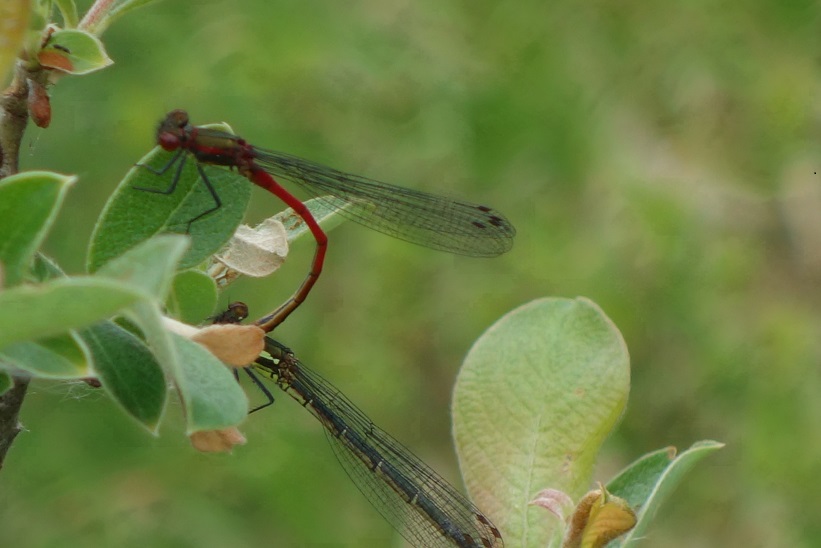Nature Notes July 2019
Date Published: 05-08-2019
A month of mixed weather, heavy rain with thunderstorms and periods of hot muggy days and nights.
SIGHTINGS
Birds (seen or heard): Carrion Crows, Magpies, Jays, Buzzards, Black-headed Gulls, Common Gulls, Tawny Owls, Sparrowhawk, Kestrel, Green/Great Spotted Woodpeckers, Wood Pigeons, Goldcrest, Blackbirds, Robins, Song Thrushes, Dunnocks, Greenfinches, Chaffinches, Bullfinches, Willow Warblers, Chiffchaffs, Siskins, Stonechats, Nightjar, Coal/Blue/Great/Long-tailed Tits.
Mammals: Grey Squirrels, Fox, Roe Deer, Pipistrelle Bats, Badgers, Hedgehogs, Wood Mice, Mole (activity).
Insects/Spiders: Wood Lice, Ladybirds, Centipedes, Midges, Buff-tailed Bees, Hover Flies, Bumble Bees, Solitary Bees, Wasps, Ant species, Garden Spiders, Wasp Spiders, Orb-web Spiders, Sheet Web spiders,Raft Spider, Grasshoppers.
Reptiles/Amphibians: Common Lizard, Slow Worms, Grass Snake, Adder.
Butterflies/Moths: Speckled Wood, Holly Blue, Large White, Small White, Peacock, Red Admiral, Painted Lady, Orange Tip, Comma, Meadow Brown, Gatekeeper, Silver-studded Blue, Large Skipper, Ringlet, Brimstone, Marbled White. Species of day flying moths.
Plants in flower/Berries: Foxglove, Herb Robert, Yellow flag Iris, Honeysuckle, Blackberry, Rowan Trees.
Dragonfly/Damselfly: Small Red, Small Blue, Broad Bodied Chaser, Emperor, Beautiful Demoiselle.
Pond Life: Whirlygig Beetles, Pond Skaters, Backswimmers, Common Newts, Stickleback fish.
The call of the Nightjar tailed-off towards the end of the month.
No reported sightings of Tree Pipits for the second year running.
Large numbers of Grasshoppers were seen throughout the month.
Many birds are experiencing a feather moult, so not such a great deal of movement being seen.
Many young birds seen along the tree line perimeter, many of which were Finches and Tits in family groups.
Dragonflies and Damselflies were seen busy laying eggs on plant material.
The heath was awash with record numbers of Silver-studded -Blue butterflies.
NATURE FACT
To mate, a male Damselfly finds a female and seizes her by the back of the neck with a pair of claspers situated at the hind end of his body. They then fly about in tandem and settle, linked together. When mating takes place the female bends her body round under the male’s body and fertilisation takes place. The female then lays her eggs under the water, inserting them in slits in the stems of plants which she creates by cutting with a saw-like ovipositor at the tip of her abdomen.
Recorder: C. Wilcox
SITE MANAGEMENT
The work party repaired stretches of the boardwalk post and railings damaged by vandalism earlier in the month.





